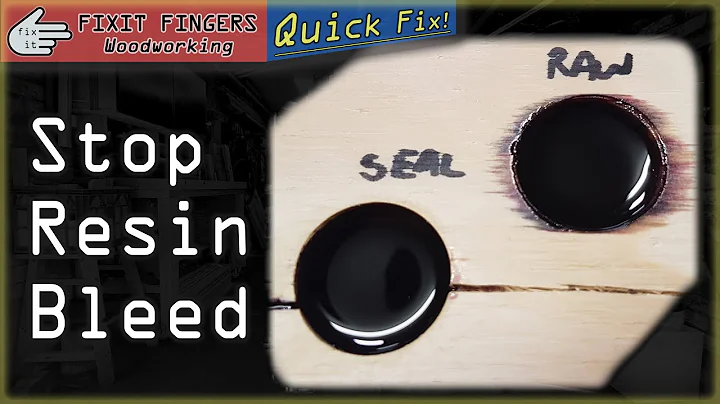Master the Art of Removing and Replacing Fishing Rod Guides
Table of Contents:
- Introduction
- Types of Finishes
- Removing Two-Part Epoxy Coating
- Removing UV Cured Coating
- Saving the Trim Wrap
- Peeling off the Finish
- Removing Remaining Epoxy
- Replacing the Guide
- Sanding the Rod Blank
- Precautions when Using Heat
- Conclusion
How to Remove Rod Coating and Replace the Guide
Have you ever found yourself in a situation where you need to repair or replace a damaged rod? Whether you are a custom rod builder or an angler, understanding how to remove the rod coating and replace the guide can be a valuable skill. In this article, we will guide you through a quick and simple method to remove different types of rod coatings, such as two-part epoxy and UV cured coatings. We will also explore tips to save the trim wrap, peel off the finish, and replace the guide without damaging the rod blank. So let's get started!
Types of Finishes
Before we delve into the removal process, let's discuss the two popular types of rod coatings available in the market - two-part epoxy and UV cured coatings. Two-part epoxy finishes are relatively softer and easier to remove, while UV cured coatings are harder and more brittle, requiring additional effort. The technique we are about to share works for both types, but keep in mind that the latter might come off in pieces rather than peeling off smoothly.
Removing Two-Part Epoxy Coating
To begin with, if you want to save the white trim wrap on your rod, follow these steps. Start by placing a razor blade along the edge of the trim wrap and make a very light scribing cut into the epoxy, careful not to go all the way to the thread. Next, use the razor blade to shave off the finish and thread from the top of the guide foot, ensuring you don't cut into the rod blank. With a thumbnail or the corner of the razor blade, gently peel off the finish, making sure to avoid cutting into the rod blank. Larger chunks may require some effort, but it shouldn't be too challenging. Once you reach the edge of the trim wrap, snap off the guide, ensuring you don't damage the rod blank.
Removing UV Cured Coating
Removing a UV cured coating follows a similar process, with slight adjustments due to its hard and brittle nature. Start by scribing a very light cut into the epoxy using a razor blade, as we did with the two-part epoxy. Proceed to shave off the finish and thread from the top of the guide foot, being careful not to cut into the rod blank. When it comes to peeling off the finish, you might need to put in a little more effort as it tends to come off in pieces rather than peeling smoothly. However, with persistence, you can successfully remove the coating.
Saving the Trim Wrap
If you want to preserve the white trim wrap, it's crucial to make a scoring cut as mentioned earlier. This scoring cut ensures that the finish over the trim wrap remains intact. By following the steps carefully, you can retain the trim wrap without any damage.
Peeling off the Finish
Now that we have removed the coating, it's time to peel off the finish. If you're lucky, you can grab an end and simply unwind it, similar to unwinding a thread. The finish will come off in larger chunks or pieces, requiring some effort to remove completely. However, as long as you're patient and cautious, you'll successfully peel off the finish without any significant issues.
Removing Remaining Epoxy
Even after peeling off the finish, some remnants of epoxy might still be stuck to the rod blank. To remove these remnants, you can use the back of a razor blade or a softer instrument like a fingernail. Ensure that you don't damage the rod blank while working on removing the leftover epoxy. Lightly shave the epoxy off or use a scraping motion to clean the rod blank thoroughly. This step ensures that the rod is ready for the replacement guide or any other desired modifications.
Replacing the Guide
If you're planning to replace the guide with a similar one, you're almost ready to proceed. However, it's essential to consider if the new guide has a different footprint and make necessary adjustments accordingly. Before attaching the new guide, you might want to lightly sand the area where the previous guide was removed. Be cautious to avoid sanding into the fibers of the rod blank. The goal is to sand off any excess epoxy residue and create a smooth surface for the new guide attachment.
Precautions when Using Heat
Some rod building enthusiasts recommend using heat to remove rod coatings. However, it's crucial to exercise caution when employing this technique. The resins used to hold the carbon fibers together in the rod blank can be compromised if subjected to temperatures above 225 to 250 degrees Fahrenheit. Unlike hot-melt cement, these resins do not reflow or re-adhere once compromised. Therefore, it's recommended to follow the method described earlier, which doesn't require the use of heat. By avoiding heat, you can safeguard the structural integrity of your rod blank.
Conclusion
Removing rod coatings and replacing guides might seem like a daunting task, but with the right technique and careful execution, it can be accomplished easily. Understanding the different types of finishes, the correct method of removal, and the precautions to take will ensure that you complete the process without causing any damage to the rod blank. By following the steps outlined in this article, you can confidently repair and replace damaged rods, enhancing their performance and durability.







